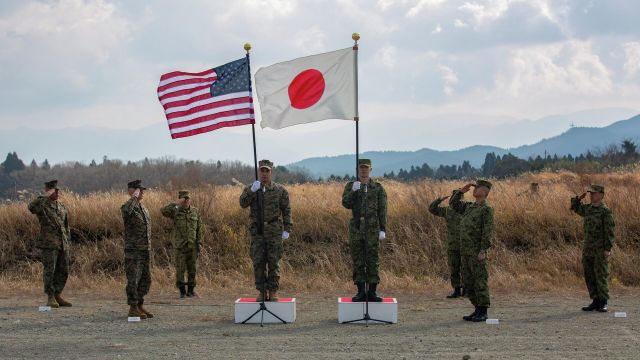TSAMTO, September 4. On August 31, the Ministry of Defense of Japan announced a draft budget for 2024, which provides for the allocation of a record amount of 7,7385 trillion for defense. yen (about 53.3 billion dollars).
As reported by Armyrecognition.com, this budget request is 13.4% higher than the initial allocation of 6.8219 trillion. yen (approximately 47.1 billion dollars), which were allocated for the current 2023 fiscal year.
As for the prospects, it is planned to allocate about 43 trillion for the five-year period for defense. yen ($295.3 billion), and the upcoming fiscal year will be the second year of its implementation.
The proposed budget increase follows changes made by Prime Minister Fumio Kishida to a key security document in the previous year. Announced in 2022, the plan aims to double defense spending or to 2% of gross domestic product by 2027. The upcoming increase in the initial defense budget will also continue the upward trend of adjustments that has continued for 12 consecutive years.
The current proposal excludes the costs associated with the deployment of US military bases, which historically amounted to about $200 billion. yen (about 1.38 billion dollars) per year.
A significant part of the budget proposed for 2024, namely 755.1 billion rubles. yen (approximately $5.2 billion) is allocated to strengthen the defensive potential in the face of countering potential adversaries in the region. This initiative, first of all, involves the development and acquisition of missiles launched beyond the reach of enemy air defenses, which can potentially be used by Japanese next-generation fighters.
The plan provides for the allocation of 930.3 billion. yen (about $6.41 billion) to provide troops with all types of ammunition. This budget request is in line with the long-term directives of the National Security Strategy, which were revised in December last year. In these directives, special attention is paid to the acquisition of ammunition for counterattacks.
As the newspaper notes, "the changing security landscape, characterized by challenges from China, North Korea and Russia," prompted the administration of Fumio Kishida to move away from the traditionally defensive doctrine of Japan, set out in its Constitution. In anticipation of potential unforeseen situations in the area of the remote south-western islands, allocations in the amount of 595.1 billion The yen (approximately $4.11 billion) is intended to expand rapid deployment capabilities, including the purchase of transport helicopters.
In addition, about 379.7 billion YEN (about $2.62 billion) are intended for the construction of two destroyers equipped with the Aegis missile defense system developed in the United States, an alternative to the Aegis Eshor ground-based missile defense batteries originally planned for acquisition. It is expected that the destroyers will be commissioned by 2028.
The amount of 75 billion. yen (about $517.5 million) was allocated for the joint development with the United States of a "planning interceptor" designed to counter potential hypersonic weapons being developed by various countries, including the DPRK, the PRC and the Russian Federation.
In addition, 63.7 billion yen (about 439.53 million dollars) is allocated for the joint development of next-generation fighters by 2035 in partnership with the UK and Italy.
By the end of the next fiscal year, Japan intends to establish a permanent joint command center for 240 people in Ichigai (Tokyo), where the headquarters of the Ministry of Defense is located. This step is aimed at improving coordination between the three branches of the armed forces.

